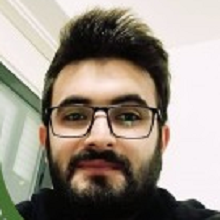Ali Batikh, Doctorant IMPACT
Ali Batikh, Doctorant IMPACT

Abstract
Our brain continuously generates saccadic eye movements and maintains their accuracy thanks to saccadic adaptation (SA). Despite this plasticity-based mechanism has been widely studied since the late 20th century, many questions remain unanswered. For instance, in addition to visual targets, saccades can also be performed toward somatosensory and auditory stimuli, but whether these ‘non-visual saccades’ can be subject to similar adaptive mechanisms as visual saccades is unknown.
In the first part of this thesis, we investigated the possibility of adapting the amplitude of reactive saccades (RS) to tactile (Study 1) and auditory targets (Study 2) via the double target step paradigm, which has largely been used to induce adaptation of visual saccades since its introduction (McLaughlin 1967). We also investigated the bidirectional cross-modal transfer of adaptation between visual and tactile saccades, as well as between visual and auditory saccades, respectively. Our results revealed that tactile and auditory saccades can be adapted in much the same way as visual saccades. However, the transfer patterns were asymmetric: visual SA transferred fully to non-adapted tactile and auditory saccades, whereas tactile and auditory SA, despite complete generalization to saccades of the same modality but toward non-adapted locations, transferred only partially to the non-adapted visual saccades. On the one hand, the full transfer of visual saccades adaptation further supports the current view of a motor adaptation locus for visual RS. On the other hand, the low adaptation transfers to visual saccades suggest the presence of adaptation loci specific to non-visual RS and situated upstream of the final motor pathway common to all saccades.
Interestingly, both studies also demonstrate that SA can be elicited in darkness, thus, without the vision of the post-saccadic target location. This seems to contradict current theories on the nature of error signals driving adaptation, which all rely on post-saccadic visual feedback. One potential factor that might serve as an error signal for SA is the locus of spatial attention, as suggested by some previous studies. Spatial attention oriented covertly (no eye movement) and saccadic orienting responses both critically contribute to visual perception and involve overlapping neural substrates. In addition, recent studies show that SA modulates the orienting of spatial attention while the reverse effect, that is, the effect of spatial attention on SA, remains unsettled. In the second part of this thesis (Study 3), we aim to assess in depth the possibility of a modulatory effect of spatial attention on SA. We used a combination of the double-step target paradigm (to induce adaptation) and the cross-modal attentional-orienting paradigm to investigate the effect of tactile exogenous and endogenous spatial attention on the adaptation of reactive and voluntary saccades, respectively. Our results show significant correlations between the amount and speed of saccadic adaptive changes and the amount of attention allocated toward or away from the adapted saccade target. Thus, Study 3 brings additional arguments in favor of a coupling between spatial attention and SA, possibly by means of an effect of spatial attention on the saccadic error signals at the level of the posterior parietal cortex.
Overall, this work brings additional empirical insights on the control of accuracy of non-visual RS and further highlights the role of spatial attention in SA. Even though significant advances have been seen in models investigating the nature of the error signals driving SA, they currently do not consider the coupling between spatial attention and SA. Therefore, based on the available literature and the outcomes of this thesis, we suggest that future work should take into account the role of spatial attention in error processing.
CRNL | CH Le Vinatier | Bâtiment 462 Neurocampus Michel Jouvet | Amphithéâtre | 95 Boulevard Pinel | 69500 Bron











